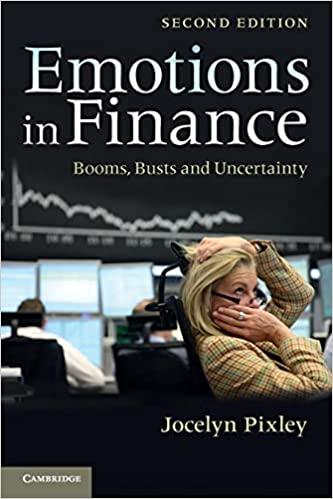Question
Suppose the following two-factor model holds: r it r f = a i + b i1 ( r 1t r f ) + b i2
Suppose the following two-factor model holds:
rit rf = ai + bi1(r1t rf) + bi2(r2t rf) + eit,
where rit is the return on security i at time t, rf is the riskfree rate, (r1t rf) and (r2t rf) are the excess returns of the two factors at time t, bi1 and bi2 are the sensitivities of i to the two factors, and eit is the impact of unanticipated firm-specific events on i.
The expected returns of the factors, E(r1t) and E(r2t) are 5% and 8%, respectively. The riskfree rate rf is 3%.
(a) Well-diversified Portfolio C has bC1 = 1.5 and bC2 = 0.3. Calculate Portfolio Cs expected return if no arbitrage opportunities exist.
(b) Suppose the expected return on Portfolio C is 2% higher than your answer in (a). Describe an arbitrage strategy, show why it is an arbitrage, and calculate the % profits. (You can use two correctly-priced factor portfolios, F1and F2.)
(c) There is another strategy that gives the same % return as the arbitrage in (b) but has a positive standard deviation. Briefly explain to your risk-loving friend why he should still execute the arbitrage strategy in part (b).
Step by Step Solution
There are 3 Steps involved in it
Step: 1

Get Instant Access to Expert-Tailored Solutions
See step-by-step solutions with expert insights and AI powered tools for academic success
Step: 2

Step: 3

Ace Your Homework with AI
Get the answers you need in no time with our AI-driven, step-by-step assistance
Get Started


